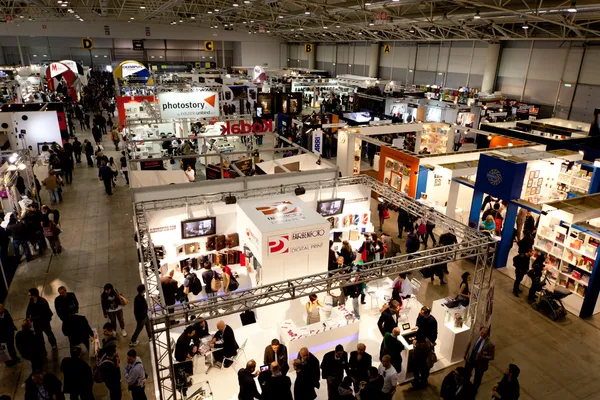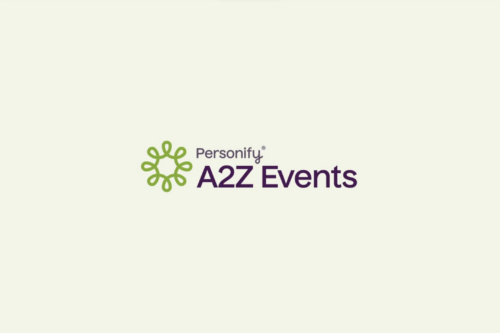Let’s be honest— when the expo floor closes, most trade show organizers lose control of the attendee experience.
From there, it’s a chaotic game of “choose your own Uber adventure” as attendees debate which invite or invites they want to take advantage of. One group heads to a steakhouse. Another sprints across the city to make it to a rooftop happy hour. Another group of attendees decides a free drink at some random location isn’t worth the effort. Somewhere in between, sponsors and exhibitors are burning through (already tight) budgets to host client and prospect events, with only half of their RSVPs showing up.
It’s disjointed. It’s not memorable. It’s expensive. And worst of all—it’s a missed opportunity for ROI for everyone involved.
When I saw a client transform this model, it not only benefited attendees, exhibitors, and sponsors; they walked away with a memorable and signature event that can’t be outdone. So what did they do?
Show management secured one large (memorable venue) as the official evening entertainment and activity for their event. They “sub-leased” spaces all over the venue to have companies that would have traditionally hosted an event at sites across the city. While every attendee was invited to the evening event, some companies opened their doors to a larger audience, while others still hosted exclusive events that required invitations.
But before you ask, it was a risk. Would companies still participate or splinter off? Would attendees want to give up what they have grown to expect? What was the outcome?
Interested? Read on.
It’s about the Dollars
Imagine you’re the sponsor who just spent $10,000 on an exclusive dinner and only got 10 people through the door—half of whom are already your customers. Sure, the wine was nice. But is that a scalable engagement strategy? Hard no.
Now that same sponsor could’ve created a brand-driven experience inside the event venue—one that attendees could walk by, step into, engage with, and remember. More opportunities for foot traffic, badge scans, serendipitous attendees, and a larger number of invitees actually attending.
From a dollars-to-data standpoint, there’s just no contest.
It’s about Engagement (and Reducing Friction)
We’re living in the attention and experience economy. Every moment attendees spend thinking about how to get to a different location is a moment they’re not thinking about your brand.
By keeping everything in one location, you eliminate friction and capitalize on attendee energy. Instead of winding down after the show floor closes, you redirect them into a curated after-hours experience.
Thinking of my friends at IAAPA and a Disney addict, I like to think of it like a theme park:
- One room is a whiskey tasting lounge hosted by a B2B tech brand.
- Another is an interactive wellness zone with IV drips and smoothie shots.
- Down the hall? A silent disco meets product demo experience.
Each is branded, designed, and owned by a sponsor—but attendees don’t have to think about transportation, reservations, or RSVPs. They wander, discover, and engage.
Upcoming Engagement Game
Another unexpected outcome was that companies observed other exhibitors and sponsors (some of their competitors) performing better than they did. Many want to create better experiences than their competitors after the first year. Better experiences equal a more memorable signature event at your show.
From Scattered to Scalable (and more affordable).
Offsite events are not scalable. They are often cost-prohibitive for show management as well. Renting out a sporting facility, large-scale venue, or unique location is often not in the budget. It’s not in, even their largest sponsors’ budget either. Coming together makes it more affordable.
Every time you expand your sponsor base or exhibitor footprint, you create more logistical chaos, more hotel ballroom bookings, more contract negotiations, and a more fragmented attendee experience.
A centralized, flexible venue setup allows growth without fragmentation. You can:
- Offer turnkey packages with tiered branding zones
- Let sponsors bring in their own creative or work with your preferred partners
- Expand or contract based on inventory and demand
And it’s inclusive. Smaller sponsors who can’t afford $20K restaurant buyouts still get a chance to shine—on their own terms, in a space that fits their size and strategy.
Built-In Metrics and Measurable Impact
Let’s talk data—because your exhibitors and sponsors are.
When everything is centralized, you can offer your partners more metrics they can’t get from an off-site dinner:
- Traffic counts per activation
- Dwell time and heat maps
- Lead capture with badge scans or app engagement
- Live feedback from polls or surveys
- Brand sentiment monitoring on socials using geofencing
Not only does this create real, reportable ROI for sponsors and exhibitors, but it also helps you as the organizer prove value and scale smarter in future years.
Better Conversations = Better Conversions
At the heart of every event is connection and networking—and no one wants to pitch to someone who’s half-distracted because they’re Googling directions or watching the time for their next shuttle, Uber arrival time or walk to the next party.
When you keep attendees in one curated space, sponsors and exhibitors have more time for genuine conversations, rather than rushed handshakes or missed opportunities.
Instead of five rushed events across town, you get one vibrant “village” of activity, where prospects and clients can flow from brand to brand, discovering solutions, asking questions, and actually building relationships.
That’s where conversion happens.
How to Make the Single-Venue Model Work
Talk with companies. Meet with your exhibitor and sponsor advisory boards. Outline why this will work and the benefits, regardless of booth size (or budget), how they can now host clients and prospects in some of the most memorable locations that both the company (and many times show management) could never book out.
Make it easy:
- Themed activation zones: Think “Tech Playground,” “Wellness Retreat,” or “Startup Alley After Dark”
- Shared resources: Common AV, event staff, and food & beverage options built into packages but paid by companies to offset your food and beverage minimums.
- Staggered programming: Rotate activities, performances, activations, etc. to encourage movement
- Gamification: A digital or physical passport system to drive traffic to each brand experience that is participating in the broader invites.
- Central check-in: Let attendees RSVP to activations on-site
This isn’t just a venue—it’s a branded community in motion that your event will be remembered for.
Final Thought: Are You Designing Events for Convenience… or Conversion?
If your post-show experience relies on rideshares, RSVPs, and RSVP regrets, you’re not just exhausting attendees—you’re leaving serious ROI on the table for your exhibitors and sponsors.
The single-venue, multi-activation model addresses this issue. It brings the energy back to your event, gives your partners tools they can actually use, and creates a space where the value of face-to-face doesn’t end at 5 PM.
So ask yourself:
- Are you giving sponsors and exhibitors the square footage… or the spotlight?
- Are you selling booth space… or creating engagement ecosystems?
- And most importantly, are you helping your partners convert connections into customers?
Because if not—someone else will.










